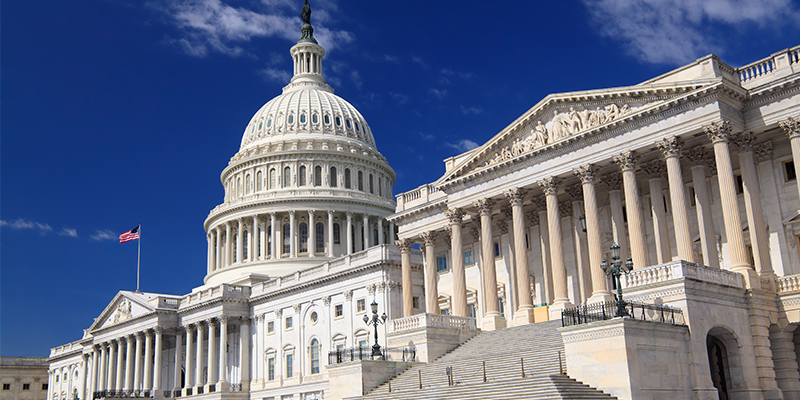By Aquiles Suarez
Nearly a month ago – two weeks before the Oct. 1 deadline when Congress needed to agree on legislation to fund federal government operations, we wrote that a government shutdown, if only for a short while, appeared all but inevitable. As of midnight Tuesday, the federal government has been closed for two weeks, with few signs pointing to a quick resolution or change in the political dynamics that led to the current impasse. A federal government shutdown of short duration is perceived by many outside of the nation’s capital as more of a political show than anything else. But the longer a shutdown lasts, the more the impact is felt by businesses and the public, including in the commercial real estate industry.
A quick recap of the policy priorities of both the Senate and House leadership of both parties, and of the White House, is helpful to understand the incentives underlying the actions of each and what could lead ultimately to a deal. The House of Representatives, controlled by Republicans, passed a continuing resolution (CR) to keep the government funded through Nov. 21, the week before Thanksgiving, by which time they believed appropriations funding bills would have been negotiated. Democrats saw the funding measure as giving them leverage to extract concessions from Republicans on Affordable Care Act (ACA) subsidies that had been increased during the pandemic but which expire at the end of this year. Republicans are demanding certain changes to the ACA provisions to reduce perceived fraud and to reduce subsidies that are currently available for higher-income individuals.
Republicans, however, do not have a unified position on the ACA credits, and Democrats are not willing to accept a future promise to negotiate the issue as enough to get them to agree to a temporary funding measure to keep the government open. The White House, for its part, does not want to be blamed for any disruptions or higher insurance premiums that may result from expiration of the ACA credits, but does want to use the lack of government funding as an opportunity to reduce the size of the federal workforce, particularly in areas that are not priorities for the Trump administration.
While the disagreement over the level of healthcare insurance subsidies is the core issue, lawmakers believe that a negotiated agreement is attainable since neither party, nor the White House, want to be blamed for increases in health insurance premiums that would result from their complete expiration. But the politics of the blame game have kept a resolution from being reached. The leadership of each side is feeling more political pressure to maintain their positions rather than move toward a compromise.
House Republican leadership feel they have done their job by passing a “clean” CR – a measure that keeps government funded at current levels with no policy changes, and something that Democrats had repeatedly voted for when they controlled the White House.
As a result, Republicans, having taken the blame for past government shutdowns when they were the ones demanding policy changes, feel the public will largely blame Democrats this time for the shutdown.
Democrats, for their part, feel Republicans will get blamed for any increases in health care premiums, and often point to polls showing they are trusted more than Republicans on healthcare issues. Moreover, Senate Democratic Leader Chuck Schumer (D-NY) was widely criticized in March by the progressive wing of his party when he allowed a Republican continuing resolution to advance in the Senate.
This week, expect more public events and Senate show votes designed to cast blame on the other party before any real negotiating takes place. The White House has begun to furlough federal workers in part to increase pressure on Senate Democrats. Delays at airports due to a shortages of air traffic controllers and closures of certain areas of national parks are the immediate focus of media stories, but the broader public has not yet felt the impact.
But widespread disruptions will increase the longer the government shutdown continues and further reductions in federal agency workforces take place. For commercial real estate, the impact would be both operational and financial. Included among these are:
- Permitting delays – required Environmental Protection Agency (EPA) reviews of environmental impact statements for major projects, or U.S. Army Corps of Engineers wetlands permitting reviews, would be suspended or delayed indefinitely, leading to project delays and increased costs;
- Internal Revenue Service (IRS) reviews – multifamily housing projects with an affordable housing component or real estate projects in opportunity zones would face delays and possibly funding shortfalls due to the failure of the IRS to process forms or issue required revenue rulings. Projects using Low-Income Housing Tax Credits (LIHTCs) or Historic Tax Credits could be affected, leading to problems with investors and lenders;
- Flood insurance availability – lack of funding for the National Flood Insurance Program could result in an inability to renew or issue policies, holding up property transactions in flood-risk zones;
- Lease payment delays – General Services Administration (GSA) rental payments for landlords leasing property to federal agencies could be delayed or withheld, creating financial hardship for landlords with federal government tenants in their commercial properties. Renewed GSA leasing activity could be delayed as a result of contracting officers having been furloughed.
The standoff over government funding could be resolved quickly, or it could drag on for weeks. A key date to watch is Nov. 1, when which is the first day of open enrollment for ACA insurance plans and one that Democrats feel will pressure Republican leadership and the White House into concessions.







